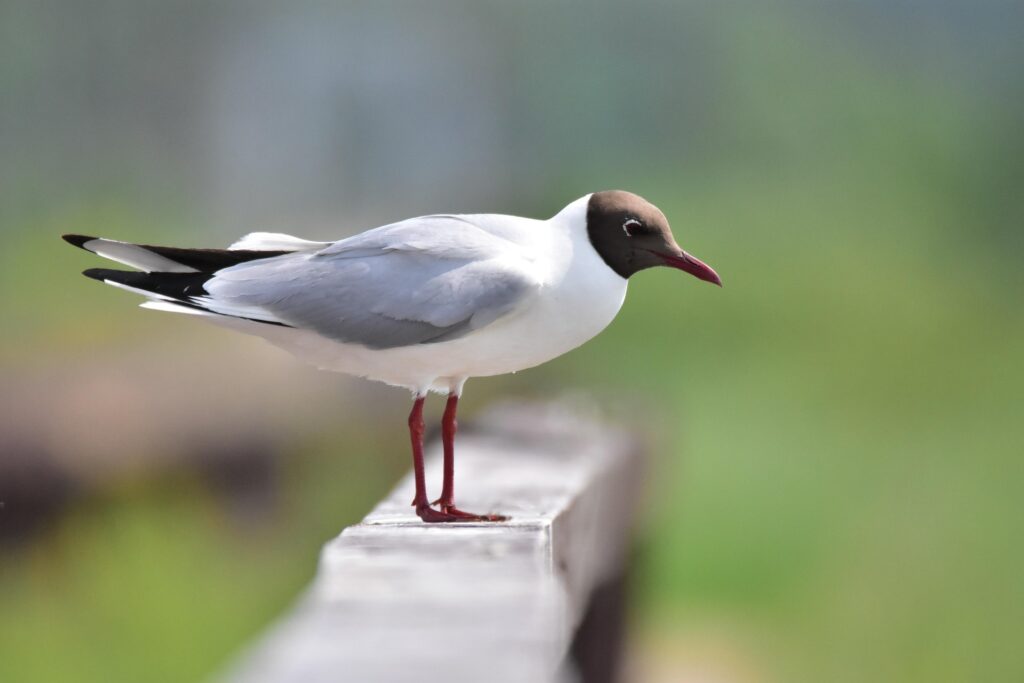Black-headed Gull (Skrattmås)

Characteristics:
The Black-headed Gull is a medium-sized gull (length 35–39 cm) with a light grey back, white body, and reddish legs and bill.
In summer plumage, it has a dark chocolate-brown head (not truly black). In winter, the head turns white with only dark ear spots remaining.
Juveniles are brownish with mottled wings and gain adult-like plumage after about 3–4 months.
In flight, it shows a white leading edge on the wings and a light, graceful flight pattern.
Habitat:
The Black-headed Gull is found throughout most of Sweden, especially around lakes, wetlands, coastlines, and farmland.
It breeds in colonies, often together with terns and other gulls, in marshes, islands, and along shorelines.
Behaviour:
This gull is social, vocal, and active. It is often seen in flocks, feeding on fields or following ploughs, and frequently visits harbours, dumps, and urban areas.
During breeding season, it becomes territorial and noisy, defending its nest and chicks aggressively.
Diet:
An omnivorous species that feeds on insects, worms, small fish, crustaceans, and waste.
It often forages in shallow water or farmland, and can catch insects in flight.
Reproduction:
Breeding occurs in May–June.
Both sexes build a nest of grass and reeds on the ground, often in large colonies.
The female lays 2–3 eggs, incubated for about 23–25 days.
The chicks fledge after 5–6 weeks and develop adult-like plumage after 3–4 months.
Migration:
The Black-headed Gull is a migratory species.
Many Swedish birds migrate south to Western Europe, the Mediterranean, or the British Isles, while some stay year-round in southern Sweden.
Distribution:
Widespread across Europe and Asia, and locally in North Africa.
In Sweden, it is common in lowland areas and one of the most widespread gulls inland.
Hunting:
Hunting is usually limited and often conducted as protective or control hunting near fish farms or airports.
Firearm class (Sweden):
The species may be hunted with:
- Shotgun, typically using pellet size no. 5–7, or
- Rifle class 4 (permitted for small game and gulls).
Think for the hunting exam:
- Medium-sized gull with reddish legs and bill, brown head in summer, white head in winter.
- Common at lakes, wetlands, and farmland.
- Eats insects, worms, small fish, and waste.
- Colonial breeder, nests on the ground.
- Chicks gain adult plumage after 3–4 months.
- Game species, hunted with shotgun or rifle class 4.
- Very social and adaptable, often seen inland.
